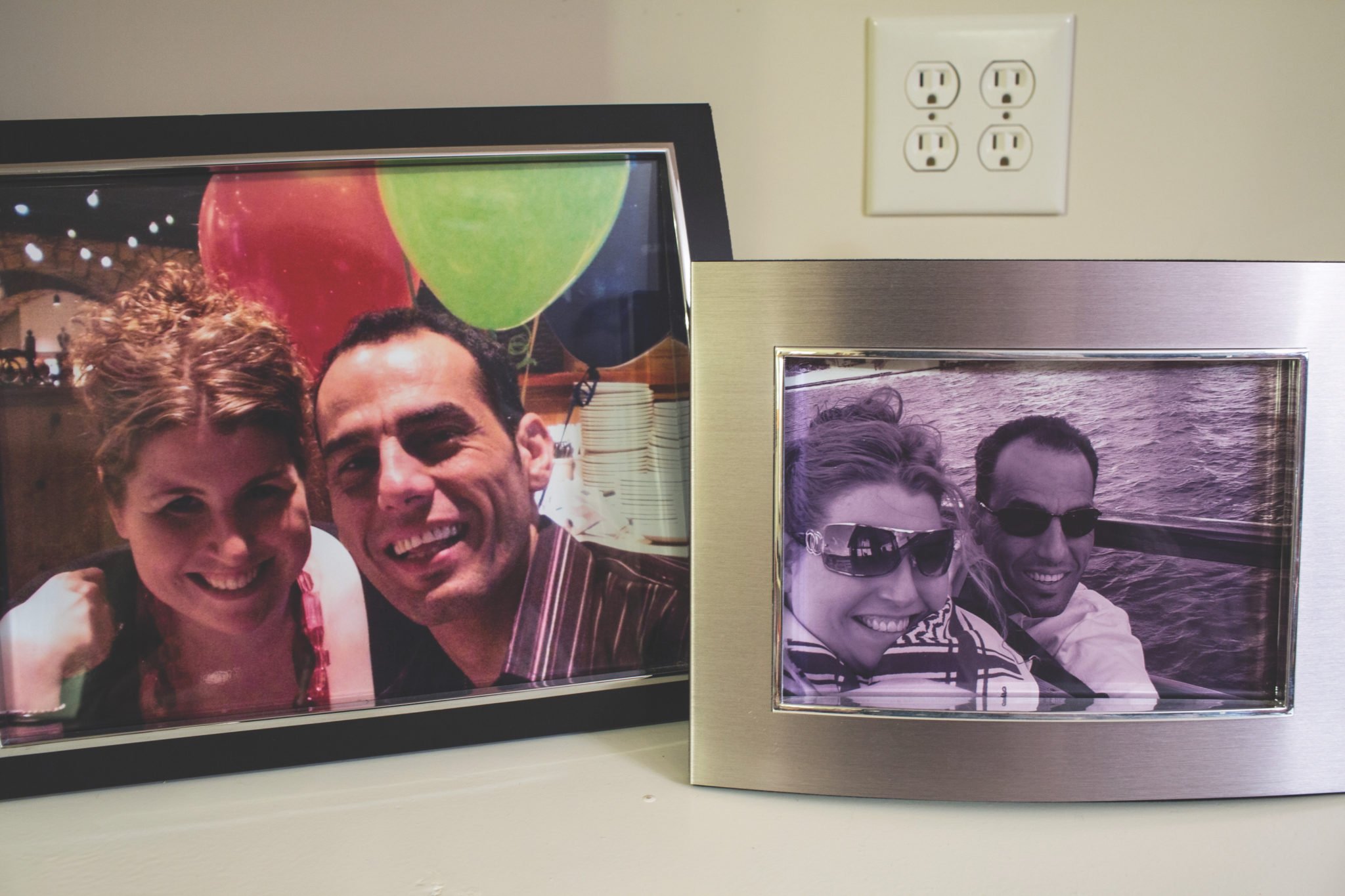
‘Go Back to Islam’
When hatred collides with Texas’ Stand Your Ground law, the result is fatal.
A version of this story ran in the January 2016 issue.
It was the second week of Ramadan and Ziad Abu Naim was fasting. He was about to head to the mosque for Friday prayers when his wife, Lisa Aimone, decided she’d go with him. She and Abu Naim were “attached at the hip,” she said, even after eight years of marriage. The couple had taken a trip in May to Belgium and Luxembourg and, even though they had been back in Houston scarcely a month, they were contemplating where to go next.
That day in June, he was in a hurry. Before heading to the mosque, he had to meet a client to drop off some contact lenses, a business he dabbled in.
The couple had driven only a block from their home on a residential street when they came to a four-way stop. They were turning left when a BMW X6 M with dealer plates and custom rims pulled into the intersection at the same time. The two nearly collided. Abu Naim paused to let the visibly angry driver pass. Instead, the man — a 43-year-old Houstonian named Robert Craig Klimek, who owns a security firm called Templar Security — made a right turn and pulled alongside Abu Naim’s Porsche SUV. Both men rolled down their windows. Aimone sat forward in her seat to catch a glimpse of the man in the other car, and that’s when she heard it: “Go back to Islam!” Abu Naim opened the door and stepped out of the car. Aimone kept her eyes on his back. Within a few seconds, she heard a single gunshot.
In late September, a Harris County grand jury declined to indict Klimek for murder. Klimek’s defense centered on Texas’ Stand Your Ground law, one of the most expansive in the nation. In 2007, the Texas Legislature passed legislation explicitly stating that civilians have no “duty to retreat” from their vehicles before using deadly force in self-defense. Instead of driving off, you can now legally shoot to kill in certain circumstances. Critics have said the law is so broad that it gives the trigger-happy carte blanche to shoot first and ask questions later.
Aimone sat forward in her seat to catch a glimpse of the man in the other car, and that’s when she heard it: “Go back to Islam!”
The week after the shooting, Aimone asked the Harris County district attorney’s office about considering it as a hate crime. Prosecutors seemed “dismissive,” she said. “It was almost like too much work for them to find something to see if it was a hate crime.”
Prosecutors told her that charging Klimek with a hate crime — which Texas law de nes as “crimes that are motivated by prejudice, hatred, or advocacy of violence” — would require proving that he “had racist tendencies in the past.” They told her to alert them if she happened to come across anything of that nature, but Aimone had avoided coverage of the shooting and wasn’t in an emotional state to conduct an investigation.
But it wouldn’t have taken too much sleuthing to find a trail.
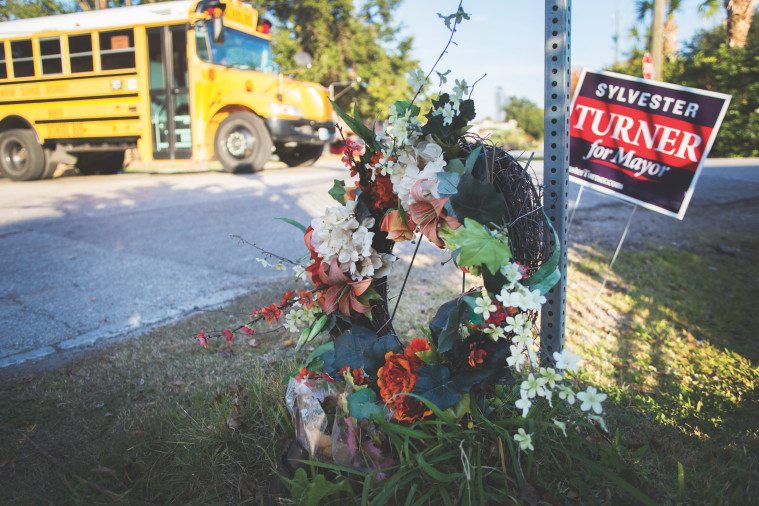
Four months before the shooting, on a forum for BMW fans, someone shared photos of a recent trip to Germany. In response, a user who goes by the name TemplarKlimek wrote, “Enjoy the Euro-Christian heritage while it still exists, the Turks will see to it that the Church’s [sic] and any other vestiges of the west are replaced with mosques, minarets, dihimmitude [sic] and a jiza tax for Europe.”
TemplarKlimek is Robert Klimek’s MySpace username and Templar Security is the name of his security firm. TemplarKlimek signs some of his posts online as “Craig,” which is Klimek’s middle name. In May, on the BMW forum, TemplarKlimek posted photos of his BMW X6 M with custom rims, the same car Klimek was driving when he shot Abu Naim. Klimek would not confirm that he is the author of the TemplarKlimek posts. However, Seldin said, “I think that’s a good assumption [that it’s him online], but I can’t verify that.”
TemplarKlimek has left behind a decade-long trail of anti-immigrant, xenophobic vitriol, mostly on forums dedicated to car enthusiasts. When he isn’t talking shop, he’s turning otherwise apolitical car discussions into polemics on the United States’ descent into a “third-world country” and the West’s transformation into an Islamic dystopia. A self-described veteran of the Iraq and Balkan wars, he advocates bearing arms to defend against the imminent chaos of a race war. He believes “illegals” from all over the world are flooding the country, and a low-intensity civil war is taking place along the U.S.-Mexico border. Southern California is already “toast” in this conflict, but “Texas will not go quietly into the night.”
Two weeks after Klimek shot Abu Naim, a user on the BMW forum wrote that TemplarKlimek “was the same guy who just killed a porsche driver in a road rage incident.”
TemplarKlimek claims to have brandished his weapon on the road before. Twice online he tells the story of his showdown in Houston with “8-9 Mexican’s [sic],” which he frames as a parable of why it’s wise — even necessary — to keep a handgun in your vehicle. In August 2010 he described how one night he barely missed hitting a “Mexican” kid running across the street. He stopped his BMW to check on the situation when a group of men approached his vehicle.
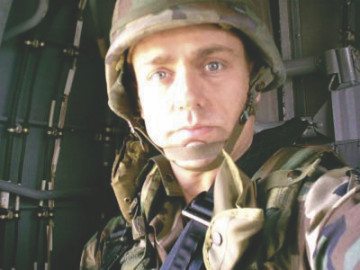
“I avoid conflict at every chance but at this point I can’t escape so I’m not going to wait till they get something harder than their fists. I keep a glock .45 acp in the center console and procedd [sic] to unlimber it,” he writes. “I roll down the window and nothing says stop what your [sic] doing like a big bore .45 with 185 +p ammo in your face.”
The men backed off and apologized, according to TemplarKlimek. “So the point is you never know when or where you may have to defend yourself,” he writes. “As the U.S. continues to trade away it’s [sic] 1st world status to a 3rd world one this will only get worse.” In another telling of the story, he rephrases his warning: “If not carrying, I keep a sidearm in easy reach in all my vehicles. As we decend [sic] into a 3rd world sh$thole, this will get worse.”
He has even equipped a Chevy Tahoe to act as his “bug-out” vehicle — as it’s known in survivalist lingo — for when “SHTF.” In an August 2013 post, he detailed his plan to load his Tahoe with ammo and food and escape the city in case of a natural disaster or “civil unrest.” His hyper-vigilance seemed excessive to other posters. “What on earth are you preparing for? The end of the world?” asked one.
On the Russian Meeting Place forum, where men share tips on traveling abroad to meet eligible Eastern European women, TemplarKlimek expressed his fear that such women would no longer find the U.S. an appealing place to call home. “Either we are trying to become north Mexico in the U.S. or North Arabia in Europe,” he wrote.
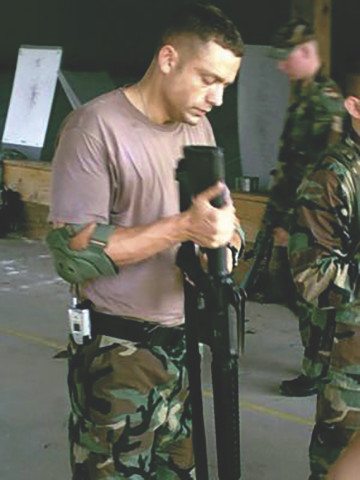
TemplarKlimek had previously mentioned the danger of Islam in a May 2007 post, responding to another user’s comment about rioting in France. It’s “mainly NOT French [who are rioting], but muslims who are not there to assimilate but to conquer ala 700 A.D.”
It’s not clear that prosecutors ever connected TemplarKlimek’s extensive digital trail to Robert Klimek. Assistant DA Kelli Johnson wouldn’t comment on any of the evidence she presented to jurors. She did say she “routinely” checks the online histories of individuals, but “whether or not that had anything to do with the evidence we had, I can’t say.” She described the shooting as “a very, very tragic situation” and a case of “road rage.” When prodded, Johnson reluctantly said Abu Naim’s death was a justifiable homicide. “It’s not anything any family wants to hear,” she said, “and if I had my way I’d have it so we couldn’t carry guns and guns were not around, but unfortunately that’s not the world we live in.”
But when Aimone recalls the details of June 26, she remembers not a case of road rage or of a man standing his ground, but one of murder.
Donate now to support independent, nonprofit journalism.The redacted police report states that Abu Naim “may of [sic] reached inside the Susp[ect]’s vehicle and struck the Susp two times in the face,” and that Klimek “pull[ed] out a semi-auto pistol out of his center compartment and [shot] the complainant in the face one time.” It further reports that Klimek helped Aimone call 911 and “tried chest compressions.” Abu Naim’s ethnicity is listed in the report as “Native Hawaiian or Other Pacific Islander.” (According to a Houston Police Department spokesman, “HPD follows state and federal guidelines on ethnicity options and does not have Arab as an option.”)
Abu Naim was born in Kuwait to a Palestinian father and a Jordanian mother. He emigrated to the United States in 1996, living in Colorado and Missouri before settling in Texas.
“It happened so fast. There was no way Ziad had time to get to his car and punch him,” said Aimone. She believes Klimek already had his gun at hand when he pulled alongside their car, primed to shoot. “It’s just so frustrating for people to say that it’s road rage, because it’s not road rage. That’s not what caused it.”
Aimone fervently denies that Klimek performed chest compressions or helped her dial 911. She said that she jumped out of the car once she heard the gunshot and found Abu Naim unresponsive and bleeding from the mouth. She ran back to the car to grab her cellphone to dial 911. Klimek sat in his car, “staring into space,” she said. The operator asked if Abu Naim still had a pulse. Aimone fruitlessly searched, not thinking to check his neck. Klimek then got out of his car and grabbed the phone from her. He placed his fingers on Abu Naim’s neck and told the operator he had found a pulse. He also identified himself as the shooter.
Aimone points to one crucial detail that she feels investigators passed over. Abu Naim was in the gold business and it could be dangerous work. Once, he was nearly robbed outside of a bank. Even scarier, gunmen broke into his brother’s home and restrained him and his family with duct tape while they stole cash and gold. For protection, Abu Naim bought a gun, which he kept in his glovebox while driving. But while Abu Naim never took his gun out of his glovebox, Klimek chose to use his. Police never took an inventory of Abu Naim’s car.
Klimek was arrested at the scene and booked, first on aggravated assault, then murder. He was released on $50,000 bail.
In 2007, the Texas Legislature passed legislation explicitly stating that civilians have no “duty to retreat” from their vehicles before using deadly force in self-defense.
Cherkaoui has tried to get an appointment with Harris County DA Devon Anderson to convince her to represent the case to a grand jury, but with no success. In an email to Cherkaoui, she said that she wouldn’t consider taking the case back to the grand jury in the “absence of exceptional circumstances” or unless new evidence surfaced. “The only issue is that we don’t know what was submitted to the grand jury,” said Cherkaoui.
Seldin dismissed any allegation that Klimek was motivated by a hatred of Muslims, describing the incident as a “haphazard traffic altercation.” Seldin claimed his client has nothing against Muslims, since he employs several at his security firm. Even if Klimek did yell a religious slur at Abu Naim, Seldin said, “I don’t think that would qualify as a hate crime because you have to show that he had the intent to target a specific group.” Klimek acted in self-defense, Seldin argued, and the grand jury’s return of a no-bill supports this claim. It’s important for citizens to know, he said, that “if you get out of a vehicle, then someone has the right to defend themselves with force that could be considered justifiable homicide.”
Klimek didn’t respond to emails and a phone message, though Seldin said that his client “feels very traumatized by the whole situation.”

The night he was shot, Abu Naim underwent surgery, but a doctor told Aimone that he was brain-dead. His right eye had swollen to the size of a baseball; the bullet had hit a blood vessel that leads to the brain. Two days later, Abu Naim was dead at the age of 42.
That day, TemplarKlimek logged on to the BMW forum and posted a favorable review of his new BMW X6 M: “Besides speed, it handles much better and is quite light on its feet for such a heavy car.”
In 2007, amid a historic decline in violent crime rates, the Texas Legislature overwhelmingly approved dramatic changes to the state’s self-defense laws. Since 1973, citizens had been obligated to flee a threat before acting in self-defense. In 1995, the Legislature provided an exception. If you were in your own home and someone entered unlawfully, you could use deadly force — a principle often called the “castle doctrine.” The 2007 Stand Your Ground law went way beyond that. It says that there’s no duty to retreat from vehicles, businesses and anywhere else a person “has a right to be present.”
Florida was the first state, in 2005, to pass a Stand Your Ground law, and the last decade has seen a flurry of state legislatures rush to do the same. The language often comes from the American Legislative Exchange Council, an NRA-backed interest group that hands “cookie-cutter ‘model’ bills to sympathetic state lawmakers — mostly conservative Republicans — who then sponsor them in their statehouses,” according to the Florida Center for Investigative Reporting. Twenty-one states have passed nearly identical versions of Florida’s law.
A 2012 Texas A&M study found that 600 additional homicides could be attributed to the Stand Your Ground laws in those states annually from 2000 to 2010. It’s unknown how many of those justifiable homicides took place in so-called road rage incidents — or how many were even in self-defense — but several cases similar to Klimek’s have surfaced in recent years, virtually all of them resulting in no-bills. The vehicle component of Stand Your Ground is shaping up to be a powerful aspect of the law, and a dangerous one at that.
Professor Tamara Rice Lave of the University of Miami School of Law points out how the vehicle provision is particularly senseless given the no-retreat component of Stand Your Ground. “If somebody’s in the car, the ignition is on, the foot is on the gas pedal, then they can easily drive away,” she said. “If it was a white, upper-class mother getting out of her car and approaching a car, [and she were shot], do I think there would be an indictment? Yes, there would be. It makes a difference who the victim is.”
One of the few people to be indicted in a “road rage” Stand Your Ground case is Crystal Scott, a black woman, who shot and killed Jonathan Ables, a white man, in September 2012. Scott and Ables had pulled into a Houston gas station following a traffic accident, and Scott said that she shot Ables in self-defense after he began banging on her car and trying to open the door. According to Scott’s lawyer, the case was textbook Stand Your Ground, as the law states that force is “presumed reasonable” if an individual attempts to unlawfully enter or remove you from your vehicle.
Scott’s pastor cited racism as a factor in the grand jury’s decision. Yet Scott’s indictment apparently didn’t sit well with DA Anderson, and in June 2015, more than two years after the shooting, charges against Scott were dropped. DA spokesman Jeff McShan told the Houston Chronicle it was “the right thing to do.”
The reversal of Scott’s indictment shows how powerful the will of the prosecutor can be in any particular case. “The standard of proof for a grand jury is probable cause, not reasonable doubt. It’s a very low burden of proof,” said Lave. “If a prosecutor does not get an indictment, then that prosecutor didn’t want to get an indictment.”
Though Stand Your Ground is a formidable shelter for those who use lethal force, it doesn’t mean that prosecutors can’t contest a self-defense charge and push for an indictment. Lave called attention to the language of the law, specifically whether the use of force is “presumed reasonable.”
After almost a decade of Stand Your Ground in Texas, state Representative Garnet Coleman had concluded that the law “legalized lynching.”
For Seldin, the lack of indictment in the case is further validation that a Harris County grand jury “is going to respect the use of deadly force,” though he notes that there are “certain exceptions” to the castle doctrine, such as the fact that one “can’t provoke somebody to come after you and then use deadly force.” This is known as the “provoking the difficulty” clause, and in some instances it’s been used to negate self-defense claims.
Consider Lee v. State, a 1995 case from Beaumont in which an appeals court upheld the voluntary manslaughter conviction of Timothy Lee, who shot and killed a woman when she stepped out of her car wielding a gun. The judge ruled that Lee’s self-defense claim wasn’t applicable because he had first provoked the victim by saying, “You got the gun, you might as well go on and kill me with it now. If you kill me, I’m going to kill you.” The court ruled: “While it is true that [the victim] reacted to this attack by getting out of her car with a gun, she obviously was the person threatened and not the responsible party who provoked this violent incident.”
The complexity of pre-Stand Your Ground cases is astounding. “The actor must first go to the wall, as some might say, before shooting his assailant” is how one legal treatise sums up Texas’ pre-2007 self-defense law. That’s no longer the case. The line between outright aggression and self-defense is now blurred.
In March 2012, Johnathon Darling placed Tate Welton in a chokehold after a traffic accident. Both men had stepped out of their vehicles on a Houston feeder road, yet Darling, a 28-year-old white male, said that Welton, a 42-year-old black male, threw the first punches and that he was merely trying to subdue him until police arrived. The HPD statement issued two days after the incident parrots Darling’s version of events. It states that Welton “was having trouble breathing” and was transported to the hospital where he died. News media hyped Welton’s stature, describing him as a “6-foot-240 pound adversary” (Darling’s height and weight are not given), yet, curiously, Darling suffered no injuries and did not have to go to the hospital. A grand jury declined to indict Darling.
State Representative Garnet Coleman, D-Houston, warned that the passage of Stand Your Ground laws would encourage a “shoot first, ask later” ethos and put “a target on [the] backs” of “young men of color.” Coleman was one of 13 legislators to vote against Stand Your Ground in 2007, and he introduced legislation in 2015 to reinstate a duty to retreat, except in the case of one’s home. After almost a decade of Stand Your Ground in Texas, Coleman had concluded that the law “legalized lynching.”
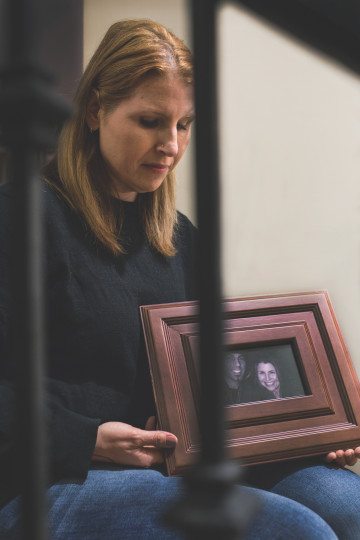
Cherkaoui plans to pursue a civil suit against Klimek on behalf of Abu Naim’s estate, but it might prove to be a legal dead end. Texas’ Stand Your Ground legislation states that “a defendant who uses force or deadly force that is justified … is immune from civil liability.”
Aimone is still processing Abu Naim’s death, and she has no desire to ever have contact with Klimek. “To think that he got away with murder,” she said. “It just kills me.”
At the intersection where Abu Naim was shot, Aimone, along with Abu Naim’s nieces, erected a small shrine. The wreath, somewhat discolored from the sun, sits just beneath the stop sign where a yellow strip of police tape still hangs. Aimone was always learning something new from Abu Naim, she said. He watched the news in Arabic and would translate interviews for her. He liked the History Channel, and many of their vacations centered around history. One day, on Al Jazeera, they saw a video of a man shot in the street in Palestine. “Is that real?” she asked him. “Yeah,” he said. She was in shock that such violence could take place in broad daylight.
Listen to writer Leah Caldwell talk about her story on the Texas Standard:
[Featured image: Photos of Lisa Aimone and Ziad Abu Naim in 2009 (left) and on vacation in Turkey in 2008 (right). Photo by Jen Reel.]
To support journalism like this, donate to the Texas Observer.

